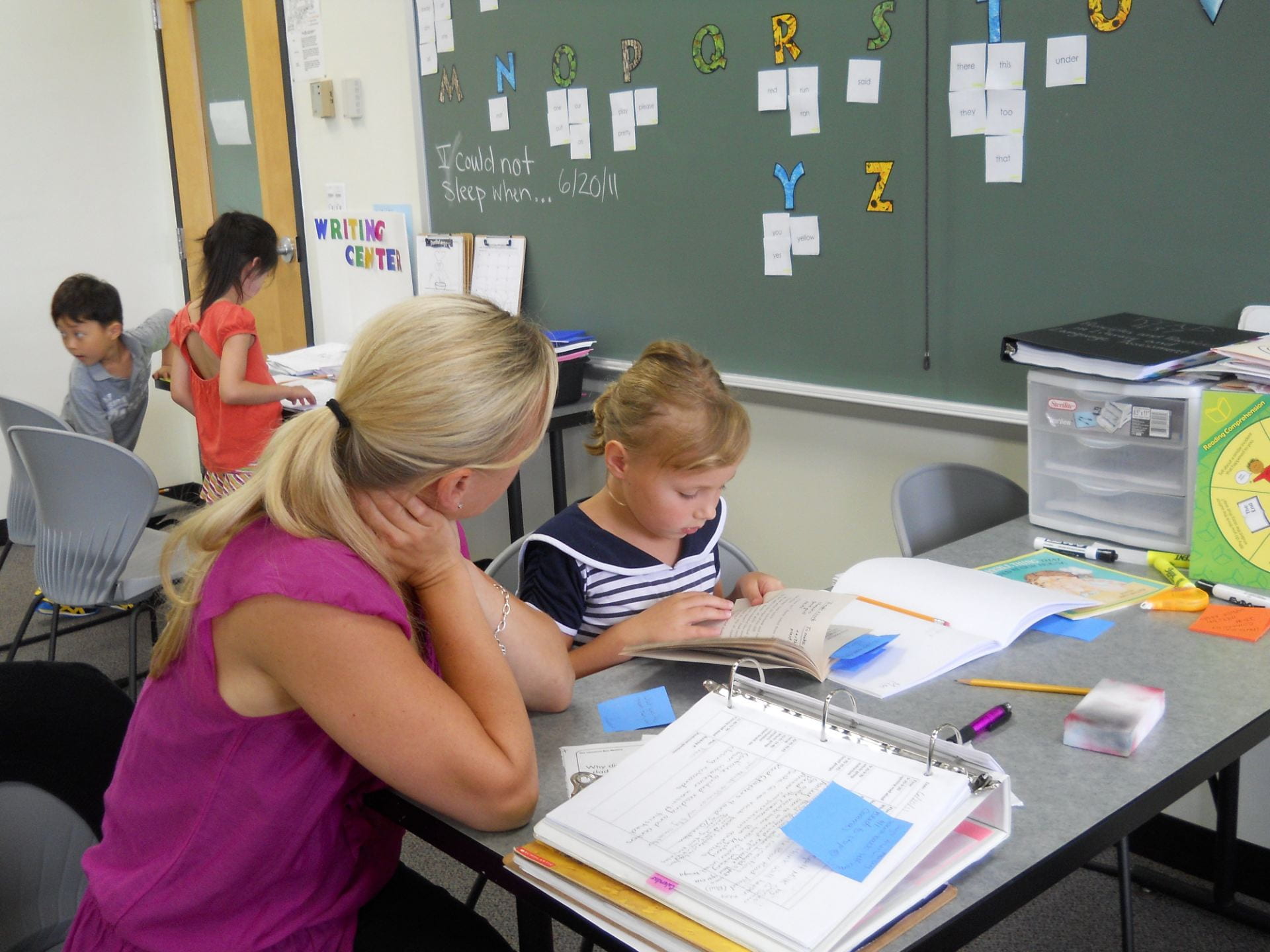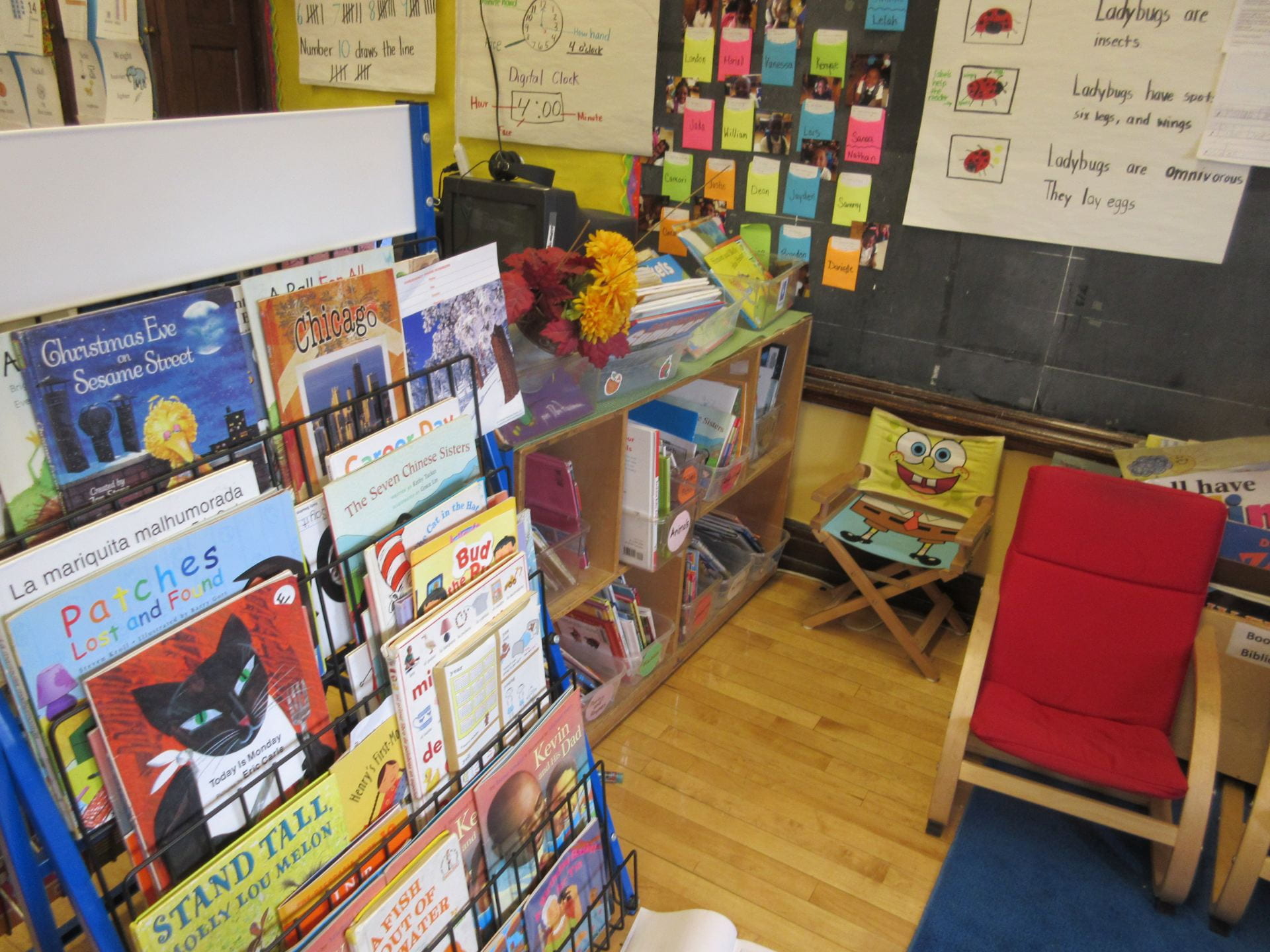Creating a Balanced Literacy School
 A New Balanced Literacy school is more than a teacher providing the best practices in literacy instruction. In fact, a NBL school is a school-wide perspective influenced by collaboration and collective decision-making among educators and the administration (which includes the principal, assistant principal, and other school leaders involved with literacy). Administrators are a vital spark in the physical, organization, and structural changes that take place within the school. No matter where your school may be in the process, we believe with the NBL resources and your school’s dedication, this ambitious task can indeed be implemented. Of course, setbacks are a natural part of schools, and throughout the years of this program, we have seen numerous schools overcome these natural setbacks by continuing to apply their passion, determination, and belief in the program. With close collaboration, support, and patience to the continuous process of building and new balanced literacy school, as well as utilizing the resources provided, we hope your school will find great success and fulfillment with this program!
A New Balanced Literacy school is more than a teacher providing the best practices in literacy instruction. In fact, a NBL school is a school-wide perspective influenced by collaboration and collective decision-making among educators and the administration (which includes the principal, assistant principal, and other school leaders involved with literacy). Administrators are a vital spark in the physical, organization, and structural changes that take place within the school. No matter where your school may be in the process, we believe with the NBL resources and your school’s dedication, this ambitious task can indeed be implemented. Of course, setbacks are a natural part of schools, and throughout the years of this program, we have seen numerous schools overcome these natural setbacks by continuing to apply their passion, determination, and belief in the program. With close collaboration, support, and patience to the continuous process of building and new balanced literacy school, as well as utilizing the resources provided, we hope your school will find great success and fulfillment with this program!
Additionally, we provide you with an at-a-glance guide for the first 18 months of setting up a NBL school.
Read more about Creating Collaborative Balanced Literacy Schools – A Framework for Implementation published in the Illinois Reading Council Journal, Spring 2018.
What are literacy and grade-level teams?
Leadership within a NBL school must take initiative in making the changes required for school-wide collaboration by developing both a literacy team and grade-level teams. Attending the team meetings also shows mutual respect and encourages shared decision-making. Welcoming learning and being patient and understanding of resistance are vital in weathering through the challenges that major changes and transitions bring in the culture of a school. Strong leadership means setting deadlines and “non-negotiable” terms for priorities in the implementation of new initiatives. Excellent schools don’t just happen, rather, they require an enormous amount of professional development woven into the learning community and seen as an ongoing cycle. In NBL schools, leadership sets the priority for receiving and providing ongoing professional development through literacy and grade-level team meetings which share rich conversation regarding best practices in literacy.
Literacy Teams:
- Provide a channel for faculty to communicate openly and effectively and report back to grade-level peers
- Develop an infrastructure through shared decision making, shared leadership, staff trust, and personal responsibility
- Build democratic structures needed to sustain successful change
- Involve input from the principal and the school reading specialist/coach
- Include a teacher representative from each grade level
- Include a resource specialist (bilingual of special education) when possible
- Include the school librarian
- Create a literacy vision
- Encourage and celebrate a diversity of opinions
Download a Literacy Team Meeting Sample and Blank Template
Grade-Level Teams:
- Include representation from each grade
- Stay focused on literacy planning only, not on other school business
- Central focus on student learning
- Professional development is built into the meetings
- Teachers share and collaborate on topics and articles of interest
- Meet weekly
Download a Grade Level Meeting Sample and a Blank Template for meetings
How do teams function in a new balanced literacy school?
Collaboration and Creating the Professional Learning Community (PLC):
A successful framework that supports effective collaboration and impacts student learning comes from six domains (Nelson, et. al, 2012):
- Deprivatizing Practice
- Enacting Shared Agreements
- Creating Collaborative Culture
- Maintaining an Inquiry Stance
- Using Evidence Effectively
- Supporting Collaboration Systematically
One way to develop collaboration and capacity building among teams is through the use of professional learning communities. PLCs 1) focus on student learning 2) focus on collaborative culture 3) focus on results, and 4) provide timely, relevant information. All data and information is reported so teachers and administrators may make decisions best suited for students and their progress.
Professional Development for Teams ( a two-year plan):
School leaders must provide the opportunity for teachers to be in ongoing professional learning communities where new information and pedagogy is ongoing. Constant professional development enables teachers to work together toward a common goal over time. Teachers and administrators need sustained time to learn how to work together, build trust, and problem solve in order to work toward a shared vision and goal about their school’s literacy instruction and student outcomes. Isolation is a main reason why many teachers leave the profession. To address this, every staff member, including new members or new teachers, must be provided opportunities for professional development and discussion.
- Download ideas for Professional Development Discussion Points for Literacy and Grade Level Teams
- See a sampleProfessional Development Workshop Topics – A Two Year Plan
- Download a PLC meeting log for more information and ideas
What does a NBL school look like? We invite you to browse the photos below taken from our NBL partner schools. Note the numerous libraries throughout the classrooms and schools and reflect on how you could bring these library resources to your school. Think of ways in partnering with teachers, students, and parents in creating access to the libraries vital to an NBL environment.
How to create multiple in-school libraries?
Year-round access to books
 Strong leaders make physical room for the new literacy spaces needed to create a NBL school as well as assess and document the progress and celebrate the achievements with the learning community at large.
Strong leaders make physical room for the new literacy spaces needed to create a NBL school as well as assess and document the progress and celebrate the achievements with the learning community at large.
- Parent Library
- Guided Reading Library
- Read-Aloud Library
- Novel Sets Library
- Professional Development Library
- CCSS Exemplar and Information Text Library
- Hall-brary